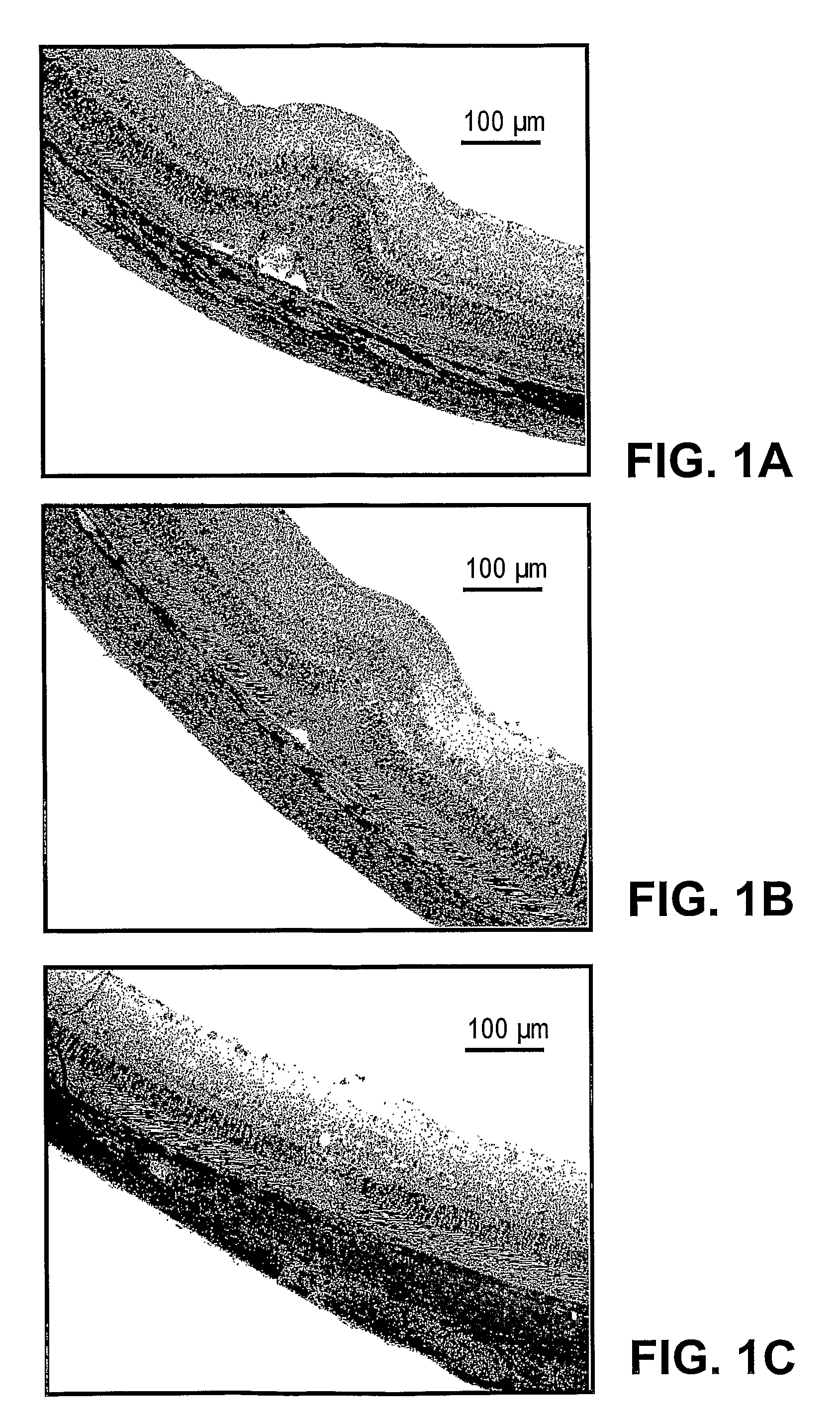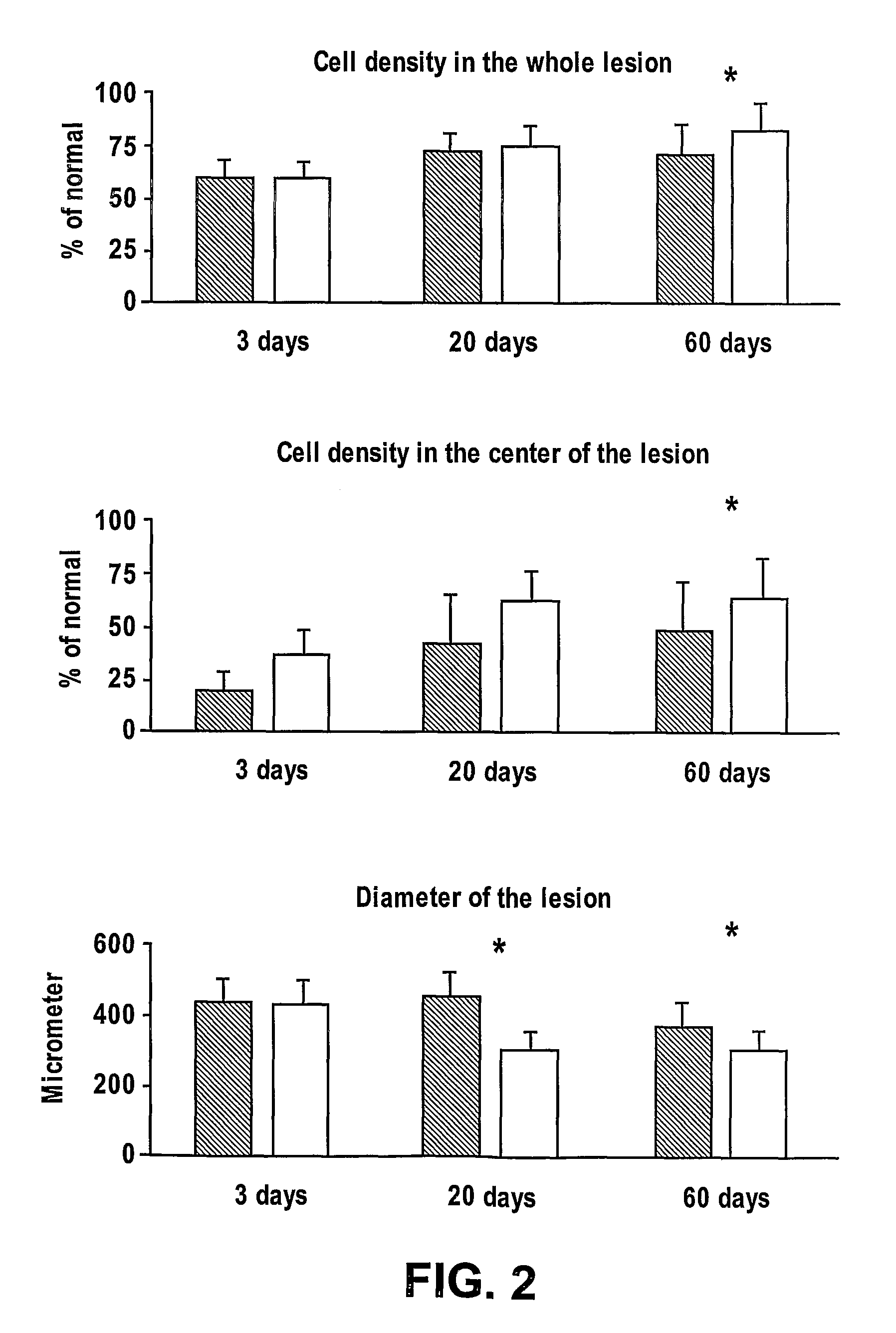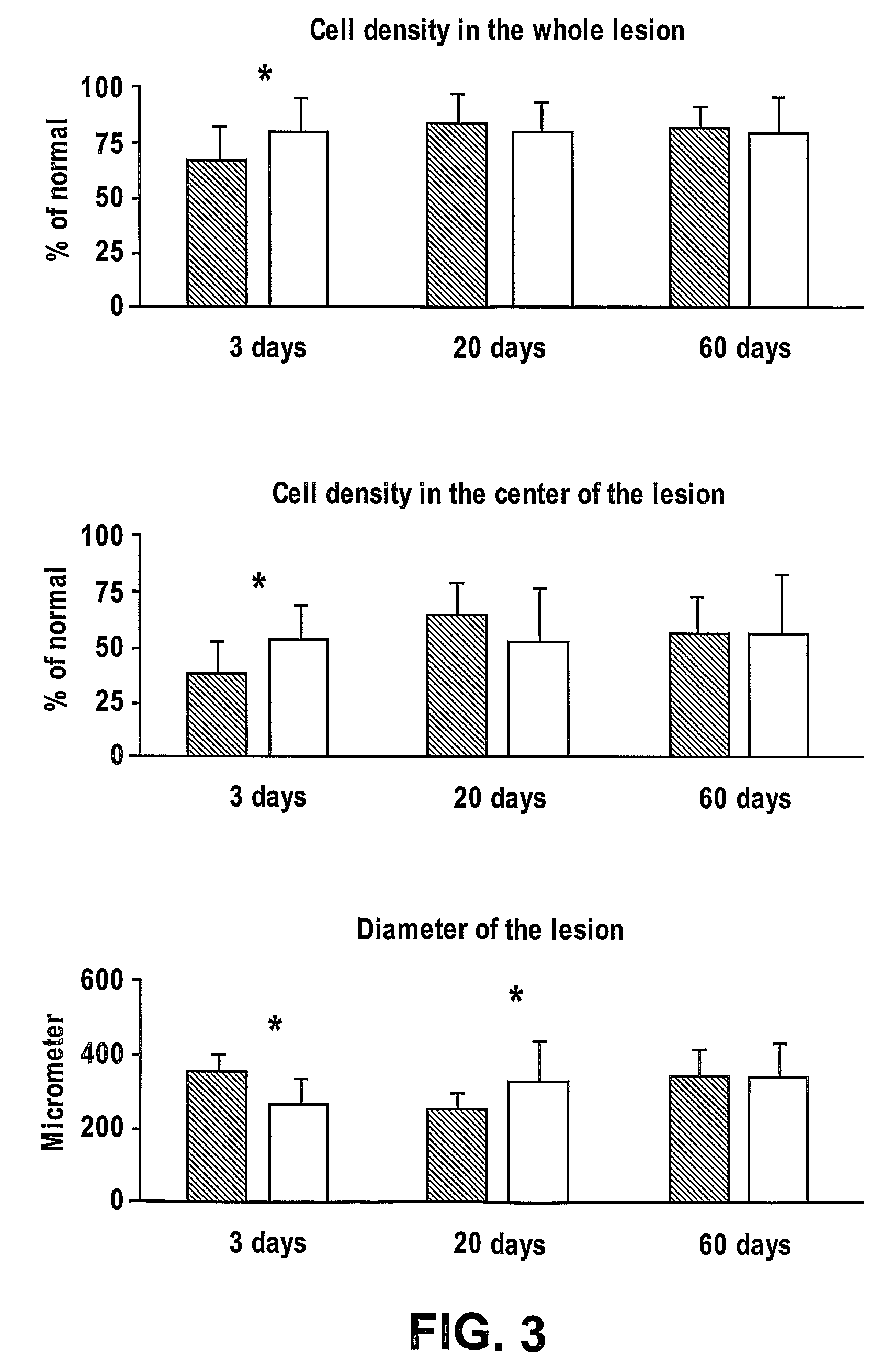Protection of the retina against laser injury by NAP and related peptides
a technology of which is applied in the field of protecting the retina against laser injury by nap and related peptides, can solve the problems of decreased anxiety, retina damage, and many reported laser-induced eye injuries
- Summary
- Abstract
- Description
- Claims
- Application Information
AI Technical Summary
Benefits of technology
Problems solved by technology
Method used
Image
Examples
example 1
Treatment of Laser Injury with NAP
Materials and Methods
[0120]Animals
[0121]A total of 72 rats in four experimental groups were used for the research: 36 rats in two groups (I and II) of NAP neuroprotective effect evaluation, and 36 rats in two control groups (III and IV) (see Table 1 below).
[0122]Pigmented DA rats (strain DA / Ola / Hsd, Harlan OCAL Ltd., Blackthorn Bicester Oxon, England; raised in Tel-Aviv University animal house), 90 days old, were used for the experiments. The posterior segment of the eye of this strain has a uniform pigmentation, making it particularly useful for retinal laser injury production. The animals were fed ad libitum with a normal laboratory diet and maintained on a 12-h light / dark cycle. They were anesthetized by intraperitoneal injections of ketamine (40 mg / kg) and xylasine (8 mg / kg) before each experimental procedure.
[0123]
TABLE 1Animal groups and research progressNumber of#animalsTitle of groupI18NAP systemicNAP injected systemically(intravenously)II18...
example 2
Administration of NAP in an Animal Model of Pan Retinal Photocoagulation Methods
[0153]Thirty-six pigmented DA male rats (strain DA / Ola / Hsd, Harlan OCAL LTd. / Blackthorn Bicester Oxen, England; raised in Tel-Aviv University animal house), 90 days old, were used in this study.
[0154]The study group will consisted of 36 animals; one eye of each was lased as above. Half of the animals were given 60 μgm AL-208 in 0.5 ml of saline intravenously immediately prior to the lasing and half will received an equivalent amount of saline.
[0155]ERG was performed on all animals in a masked fashion at 3 and 20 days after the lasering. Experiments are also done at 60 days after the lasering.
Laser Injury
[0156]The animals were anesthetized (intramuscular injection of 20 mg ketamine and 1 mg xylasine) and after dilation of the pupil with sterile drops of Topicamid 0.5% (Midramid, Fisher), a contact lens, specially crafted in our Institute, to fit a rat eye for retinal laser irradiation, was attached to the...
PUM
| Property | Measurement | Unit |
|---|---|---|
| molecular weight | aaaaa | aaaaa |
| volume | aaaaa | aaaaa |
| concentration | aaaaa | aaaaa |
Abstract
Description
Claims
Application Information
 Login to View More
Login to View More - R&D
- Intellectual Property
- Life Sciences
- Materials
- Tech Scout
- Unparalleled Data Quality
- Higher Quality Content
- 60% Fewer Hallucinations
Browse by: Latest US Patents, China's latest patents, Technical Efficacy Thesaurus, Application Domain, Technology Topic, Popular Technical Reports.
© 2025 PatSnap. All rights reserved.Legal|Privacy policy|Modern Slavery Act Transparency Statement|Sitemap|About US| Contact US: help@patsnap.com



